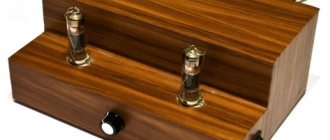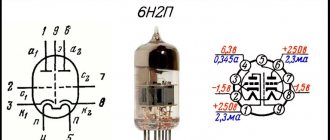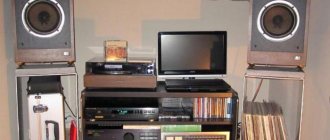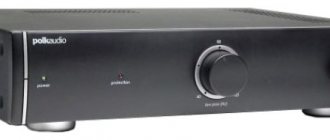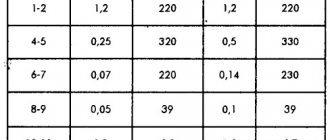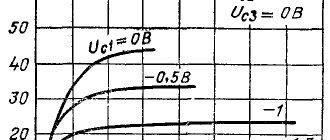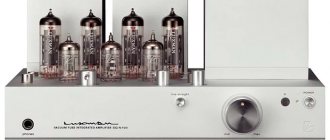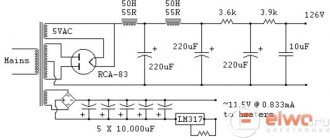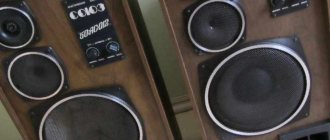What is interesting about a tube audio amplifier?
An amplifier is one of the key components of the acoustic infrastructure, which is responsible for increasing the power of the signals coming from sound sources, switching the corresponding devices, adjusting the volume level, and also transmitting the signal, the power of which is amplified, to audio equipment designed to play tunes.
Tube amplifiers use radio tubes as a key element of circuitry. They perform the function of reinforcing elements. Typically, tube amplifiers provide less distortion. As many music lovers note, the corresponding devices are characterized by warmer, softer playback of melodies - especially when playing mid-range and high frequencies.
Another major advantage of a tube amplifier is that in many cases it provides a richer sound compared, for example, with transistor devices. This is possible thanks to the unique properties of the lamps themselves, which, for example, are adapted to function without auxiliary correction, which is necessary to maintain the operation of semiconductor devices.
Single-cycle and push-pull devices
Lamp devices are most often classified into 2 main categories - class A and class AB. The former are also called single-cycle. In them, amplifying elements stimulate an increase in the power of both half-waves in the signal - both positive and negative. The second devices are also called push-pull. In them, each subsequent cascade of increasing power involves the use of different elements - one can be responsible for the positive half-wave, while the other can be responsible for the negative. Class AB amplifiers are usually more economical and efficient, and often more powerful. But discussions sometimes arise on this issue among music lovers.
The devices under consideration in many cases are much more expensive than their transistor counterparts, despite the fact that their design is quite simple. Many music lovers assemble the corresponding devices on their own - however, you need to try to find the best tube amplifier circuits - on 6P3S, for example, or other popular tubes. For connoisseurs of music played using the devices in question, their price often becomes secondary - if the decision is made not to build an amplifier, but to buy it. At the same time, the characteristics, of course, play an undeniably significant role when choosing a device. Let's look at what they can be, as well as examples of popular models of the corresponding type of device.
Pignose
The Pignose is now known as the Legendary 7-100. A truly legendary amplifier was created in 1969 by Richard Edland and Wayne. Kimbell and was the world's first portable guitar combo. Despite its compact size, Pignose weighs about 3 kilograms. Can be powered by batteries or an adapter.
For carrying, there is a special handle on the case, as well as belt mounts. The amplifier's only controls are the volume knob, which is also responsible for turning it on and off and gain. Despite the power of only 5 watts, transistor circuitry and a 5-inch speaker, the combo has a mature, serious sound, thanks to which many famous musicians (including Eric Clapton and Frank Zappa) have used it in studio work.
Don’t forget about the great movie “CrossRoads”, in which this kid became the star.
Pignose benefits:
- Serious sound, despite the size
- Battery operated and fully mobile
- Ease of use
- Stylish design
People hear with their eyes:
Amplifier ProLogue EL34: characteristics and reviews
According to many experts, the best tube amplifier, or at least one of the leaders in the relevant criterion (from those that belong to the budget segment), is the ProLogue Classic EL34 device. This device can operate using two types of lamps - the actual EL34 or KT88. In this case, the user does not have to reconfigure the amplifier.
According to experts - reviews reflecting their opinions can be found on many thematic portals - one of the main advantages of the device is that it is equipped with interfaces that allow the load to be applied to the lamp smoothly, which helps to increase its service life. The amplifier is equipped with an effective volume control. The device has quite a lot of power, which is 35 W.
Which combo amplifier should I buy for my home?
The correct choice of such a device depends primarily on the nature of the use of the musical instrument. An important parameter for the operation of a combo amplifier is power - the learning process or amateur guitar playing at home is unlikely to require equipment more powerful than 10 W.
It is worth paying attention to the dimensions of the model and the size of the speaker. Single workouts can be done using a compact amplifier weighing about 2 kg. When using a device permanently, a balance must be found between size and performance. We recommend purchasing powerful models weighing no more than 8 kg and with speakers measuring about 6 inches.
It is also important to consider the additional functions of the equipment. Budget devices may not have advanced capabilities. But the standard set of options for a universal combo amplifier includes:
- equalizer,
- overdrive,
- noise reduction and some others.
In most cases, this is enough to customize the sound of the instrument.
Recommendations: 10 Best Car Amplifiers
11 best amplifiers
15 best electric guitars
Triode Amplifiers
Another amplifier that belongs to the budget category is the TRV-35 device, produced by the Japanese brand Triode. The fact that it is assembled in Japan largely determines the quality of the corresponding product. The amplifier is versatile - perhaps the best tube amplifier in its segment from this point of view. The lamps that can be used on the device are EL34; in some cases, it is possible to use ElectroHarmonix elements manufactured in Russia.
According to experts, among the most notable options of the amplifier in question is the ability to connect to modern home theaters.
Another well-known product of the Japanese brand Triode is the TRX-P6L device. As some experts note, this device is the best tube amplifier in the Triode line in terms of functionality. Thus, it contains, in particular, a four-band equalizer, which is designed to optimize the timbre of the melody, taking into account the specific acoustic environment in the room, as well as the parameters of the sound systems used. The device in question allows you to use different categories of lamps - EL34, 6L6, as well as KT88. The device is equipped with a reverse interaction depth regulator. The amplifier can operate in 2 modes - triode and ultralinear.
Another notable device produced under the Triode brand is the VP-300BD amplifier. Many music lovers ask a common question: “Single-cycle or push-pull tube amplifier - which is better?” They can, by choosing the VP-300BD, which belongs to the devices of the first type, remain very satisfied with the purchased device. The device in question is a triode, classified as an open type amplifier. It can be noted that the output stage of the device operates on 300B triodes, which are classified as direct channel.
Sovtek Mig-60
Yes, excellent amplifiers were also made in Russia, the Mig-60 is a fairly redesigned Marshall JCM800, but, according to some authoritative musicians, in many ways it is even better than its progenitor. For example, Dean DeLeo of Stone Temple Pilots uses it regularly in the studio. Perhaps this decision was influenced by unique schematic developments or details of the Soviet defense industry or partial manual assembly (handwired), but at the moment the Sovtek Mig-60 has acquired cult status, especially in price among American stoner chics.
Advantages of Sovtek Mig-60:
- Fat overdrive with a pronounced midrange, great for stoner rock
- Partial manual installation
- Low cost on the secondary market
High gain dad
Audio Research VSi60
Among the most famous brands producing tube amplifiers is the American corporation Audio Research. Its most technologically advanced products include the VSi60 device. Many music lovers are convinced that tube amplifiers are better than transistor ones, and the device produced by an American company makes it possible to put forward a strong argument in favor of devices of the first type: according to experts, the amplifier in question provides the most impressive sound scale, quite comparable to the performance of transistor devices. The main lamps that the American device works with are KT120. The volume control of the amplifier in question is electronic.
Fender Twin Reverb
The Twin Reverb was introduced by Fender in 1952 and has since undergone a number of changes, both externally and internally. In this regard, amplifiers from different years are very different. However, they also have something in common - their amazing, characteristic pure sound.
At the moment, the combo amp has a power of 85 watts, two 12-inch speakers in an open cabinet, two channels, a spring reverb and a tube vibrato effect. Many famous musicians have used Twin Reverb amplifiers including Jimi Hendrix, Eric Clapton and Keith Richards. Many guitar teachers (including the author’s teachers, of which there were several) recommend this device. The author, already understanding something about sound (thanks to Mikhail Rusakov’s course), received true pleasure from the sound.
View price
Advantages of Fender Twin Reverb:
- Reference clear sound, soft and warm
- Gorgeous vintage design
- Amazing tremolo and vibrato effects
- Versatility, suitable for almost any style where you need clear sound
Plexi Hendrix:
Amplifiers Unison Research
Another well-known brand manufacturer of the devices in question is Unison Research. The most effective solutions developed by this corporation include the S6 amplifier. It is arguably the best tube amplifier, or at least one of the leading solutions, in terms of its combination of characteristics typical of a Class A device: high power of 35 W, as well as a significant damping factor. The device uses 2 direct-channel triodes located in each channel.
As experts note, the amplifier in question is characterized by the highest sound quality in terms of detail and purity of the reproduced melody.
The next well-known product produced under the Unison Research brand is the P70 amplifier. In turn, it is two-stroke. Music lovers who wonder why a single-ended tube amplifier plays better than a push-pull amplifier somewhat change their perception of the effectiveness of the corresponding devices after listening to music while using the device in question. The developers of the P70 amplifier managed to provide exceptionally high sound quality with a very impressive device power - more than 70 W.
As experts note, the device can connect to an acoustic infrastructure that forms a fairly impressive load. The device in question is also characterized by genre versatility. If we consider the best tube amplifiers for listening to rock music, the P70 device can rightfully be classified as a leading solution.
Among the well-known single-cycle products manufactured under the Unison Research brand is the Preludio device. It also operates in Class A. It uses powerful KT88 tetrodes. The power of the device is 14 W. Therefore, the amplifier requires connection to an acoustic infrastructure that has a sufficiently high level of sensitivity.
Randall Warhead
Without exaggeration, all fans of rock music are familiar with the group Pantera and its brilliant, untimely departed guitarist Dimebag Darrell, who had an original and recognizable metal sound, which is rare for heavy music. The basis of which was a three hundred watt transistor amplifier Randall Warhead.
It was on it, and not on the Krank, that Dimebag first found his sound, the main secret of which may have been the built-in 9-band graphic equalizer. The amplifier also had two channels on board, clean and overdrive (in fact, a furious high gain), and an effects loop on the rear panel. The cabinet with 4 Celestion speakers was equipped with comfortable legs and wheels, which is very important during grueling concert tours.
Randall Warhead benefits:
- Powerful dry overdrive, with an accentuated top end, ideal for thrash metal
- Aggressive design
- 9-band parametric equalizer
- No need to replace expensive lamps, as a result of the transistor circuit
Thunder of Heavy Guns:
McIntosh
Another well-known brand that produces amplifiers is the American corporation McIntosh. Many music lovers, wondering which tube amplifier is better, first of all associate the highest quality products with those devices that are manufactured under the McIntosh brand. This corporation is one of the world's most recognizable manufacturers of audio equipment in the Hi-End segment.
It may be noted that the MC275 product from McIntosh first appeared on the market in 1961. Since then, it has undergone a number of improvements, but is still produced under the historical name. In principle, this amplifier is one of the legendary devices, one of the best products in the world in the Hi-End segment. The device uses KT88 lamps. The amplifier power is 75 W in stereo playback mode.
Soldano SLO-100
Michael Soldano was engaged in small-scale production and modification of guitar amplifiers in Los Angeles, while simultaneously developing his own designs, one of which was the Soldano SLO-100, which was a heavily redesigned Japanese Yamaha T-100 amplifier. Released in 1987, the SLO-100 became an instant hit among professional musicians.
There is a legend that Michael Soldano coined the term “high gain” only to provide a good description of his new amplifier and this describes it perfectly. The overdrive channel is the crown jewel of this amp, a superb super readable high gain that once you hear it you'll never forget, but it also has a great clean channel.
Also, SLO-100 has great components and no compromises in the quality of the final product. Therefore, a huge number of musicians, including Lou Reed, Michael Landau, John Fogerty and of course Mark Knopfler, have given their hearts to this amplifier.
Audio Note
Another well-known brand in the amplifier market is Audio Note. Among its most popular products is Meishu Phono. Perhaps this is the best tube amplifier in its segment, if we consider the corresponding devices from the point of view of maintaining the purity of technology. So, it does not involve a single semiconductor. The structure of the device’s power supply contains 3 transformers, 3 kenotrons, and 2 chokes. The output stage uses 300B triodes. The amplifier design includes an effective tube phono preamplifier. The device in question has a rather modest power, which is 9 watts. Nevertheless, the device is compatible with many modern types of floor-standing acoustic equipment.
Determining the best tube sound amplifier based on the subjective perception of its operation is quite difficult. However, you can get closer to solving such a problem by comparing certain device models according to their main characteristics, as well as analyzing the relevant parameters.
Cat trail
Paravicini claims that he developed the V12 from scratch, but I would like to doubt this - the device is too similar to the EAR V20 (now, apparently, discontinued, since such a model is not available on the company’s website). However, this similarity is purely external (the V20 circuit was radically redesigned) and stems from the designer’s love for... what do you think? To the 12-cylinder engine of an exclusive Jaguar car! The answer seems paradoxical, but at the same time expected: it is clear that the designer, drawing a sketch of the inclined compartments for lamps, remembered the camshaft covers of the V-shaped power unit. The tired “stepped” design (lamps in front, black transformer boxes behind them) gave way to smooth contours.
As a result, the EAR V12 attracts the eye for a long time: you admire the chrome-plated crescent of the facade, the golden rotary handles, and the power button (when you press it, it’s as if the sun is bursting into flames). On the top panel, in a column, there are transformers in casings with polished covers and vertical (!) screw acoustic terminals, designed for both “banana” and bare cable. There are six of them, since speakers with a nominal impedance of 8 or 4 Ohms are connected to different terminals.
In the new EAR Yoshino V12, the number of tubes is reduced to 11 per channel: 5 ECC83 and 6 indirectly heated EL84 output pentodes
The rear panel is equipped only with RCA jacks for an unbalanced signal. These include five linear inputs and an unregulated output. The far right input is labeled with the promising word Phono, but there is no corresponding corrector - the name implies that the corrector, purchased for some money, will be connected to this terminal.
The general principle of operation of the amplifier is the same as that of the EAR 509: open-loop circuit, balanced bridge mode. The V20 amplifier contained three dozen tubes: 26 double ECC83 triodes and 4 12AU7 triodes. The output stage was organized according to a push-pull circuit, the lamps operated in class A, etc. improved triode mode (single-ended amplifier EAR 859 and push-pull amplifier EAR 861 are organized in a similar way). At the same time, a power of only 20 W/ch was developed.
In the new device, the number of lamps has been reduced to 11 per channel: 5 ECC83 and 6 indirectly heated EL84 output pentodes. They also operate in class A using a push-pull circuit, but in pentode mode. Having carried out such a serious modernization, Paravicini achieved triple success: he significantly increased the reliability of the circuit and increased the output power to 60 W/channel. (8 ohms) and reduced the cost of amplifier maintenance. In short, we can consider that quantity has turned into quality and the result is an amplifier of a fundamentally new design.
The designer pays special attention to transformers. He firmly believes that they determine the sound quality of an amplifier. “You can’t get good bass from a tube amp that I can lift with one hand. There are no miracles!” In other words, the V12 weighs 22kg for a reason, and the lion's share of its weight comes from transformers manufactured in-house by EAR (hand-wound copper wire). They have an W-shaped core (“toroidals” Paravicini does not favor). The secret of their impeccable work lies, among other things, in the special way of laying the layers.
Choosing the best amplifier: model comparison parameters
What parameters can be considered as key? According to modern experts, the most important characteristics in this case may be:
— power;
- frequency range;
— level of harmonic distortion;
— signal-to-noise ratio;
— support for communication standards;
— level of energy consumption.
In turn, these parameters can be compared with the price of the device.
Choosing an amplifier: power
As for the first indicator - power, it can be presented in the widest range of values. Optimal for solving most problems that characterize the use of a tube amplifier is an indicator of about 35 W. But many music lovers welcome an increase in this value - for example, up to 50 W.
At the same time, many modern high-tech devices of the corresponding type work excellently at a power of about 12 W. Of course, in many cases they require connection to a high-performance acoustic infrastructure. But the use of effective audio equipment is one of the mandatory attributes of using, in fact, the devices in question. Why a tube amplifier is better than more modern modifications of devices is a question that is not particularly relevant for many music lovers, since they have repeatedly been convinced in practice of the objective superiority of the corresponding devices in key parameters. And therefore, they try to carry out testing and practical use of tube amplifiers on pre-prepared equipment that meets the highest requirements.
Frequency
Regarding the frequency response of the amplifier, it is highly desirable that it be in the range from 20 to 20 thousand Hz. Although, it should be noted that it is quite rare that modern manufacturers of the devices in question supply amplifiers to the markets that do not meet this criterion. It is difficult to find equipment in the Hi-End segment that does not reach the specified frequency parameters. One way or another, when purchasing a tube amplifier, for example, from a little-known brand, it makes sense to check the frequency range in which it supports.
Harmonic distortion
As for harmonic distortion, it is desirable that it does not exceed 0.6%. Actually, the lower this indicator, the better the sound. The best tube amplifier in a given segment is often determined primarily by harmonic distortion. It’s worth noting right away that the corresponding indicator is not the most significant from the point of view of ensuring good sound quality. However, this parameter characterizes the response of the acoustic infrastructure to the input signal. It is quite difficult in practice to stimulate the response of acoustics during measurements in the same way as is done when playing real signals. But modern tube amplifier brands are trying to ensure the lowest harmonic distortion. Prestigious device models are capable of providing it at a level not exceeding 0.1%. Of course, their cost may be incomparably higher than competing models that have a higher harmonic distortion rate, but for a music lover, the issue of price in this case may be of secondary importance.
Creek CAS4040
Year: 1983
Price: £70
At one time, this 30-watt device surprised Hi-Fi experts. This model, being the first amplifier from Creek Audio, sounded so good that many audiophiles could not believe that the young company was able to challenge the famous manufacturers.
Signal to noise ratio
The next parameter is the signal-to-noise ratio; in modern tube amplifiers it most often corresponds to 90 dB or more. In general, this value can be considered very common when comparing the characteristics of various devices, even if presented in different segments. Therefore, if the task is to choose a good single-ended tube amplifier or, for example, a push-pull amplifier, then the parameter under consideration will not always objectively reflect the competitiveness of a particular device. One way or another, the higher the corresponding indicator, the better. It is desirable that it be at least 70. Some top amplifier models provide a signal to noise ratio of more than 100 dB. But their price, as in the case of harmonic distortion, can be impressive.
Marshall Super Lead 100
In 1966, Marshall released its first 100-watt amplifier, then called the “Super 100,” which was unusually loud and stressed the speakers. The amplifier's control panel was made of transparent plexiglass, and the title text was printed in black letters on a gold background.
In this regard, such 100-watt heads were called “Plexi” among musicians and were very highly rated for their soft and at the same time powerful sound. The cabinet was made of plywood and had four 12-inch Celestion 15-watt speakers, period 1969 – 1976 the company made a gradual transition from the speakers of these speakers to the now living classic model Celestion G12H-30 30 watts.
Deep Purple and the Guess Who, as well as many other great bands of the 1970s, toured with such amplifiers, thereby giving rise to something of a Plexi cult, but the most enduring association with the Super Lead is Jimi Hendrix, who used Plexi with bass cabinets.
Advantages of Marshall Super Lead 100:
- Classic hard rock sound, highlighted mids and natural tube compression
- Reliability and ease of use
- Stylish classic “Marshal” design
- High power and volume
Walking concert:
Other parameters
The remaining parameters - support for certain communication standards, power consumption - are significant, but secondary. It makes sense to pay attention to them, all other things being equal, according to the indicators that we discussed above. One way or another, for a modern amplifier, it can be considered typical to have support for a sufficient number of stereo pairs - about 4, audio outputs for recording sound. Regarding power consumption, the optimal figure is about 280 W.
Of course, when considering the question of which tube amplifier is better, many subjective factors also play a role. Most often, music lovers evaluate the corresponding devices based on their design, build quality, sound level, and ergonomics.
All of the above parameters can be compared with the price of the device, which can be presented in a very wide range of values. But a person for whom the question of why a tube amplifier is better than a transistor one is not particularly relevant, since he knows the answer to it, the price, as we noted above, cannot always be considered as the most significant criterion when choosing a device for listening to his favorite tunes.
